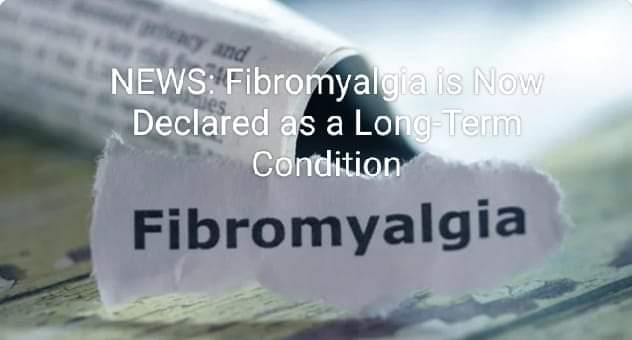By Colleen Doherty, MD
Published
Medically reviewed by Smita Patel, DOPrint
Table of Contents
- Symptoms
- Hallucinations
- Diagnosis
- Causes
- Risk Factors
- Treatment
- LBD vs. PDD
- End-Stage PDD
- Outlook
- Seeking Medical Care
Parkinson’s disease dementia (PDD) is a feature of Parkinson’s disease, a progressive movement disorder associated with both motor (movement-related) and nonmotor symptoms.
Dementia causes symptoms like difficulties with memory and making decisions and changes in behavior and mood. It can develop on average about 10 years after PD-related movement symptoms, namely stiffness, shaking, slow movements (bradykinesia), and loss of balance.1
Approximately 20% to 40% of people currently living with PD have dementia, and up to 80% of people with PD will eventually develop it.2
This article reviews the symptoms, diagnosis, risk factors, and treatment of Parkinson’s disease dementia. It also helps distinguish PDD from dementia with Lewy bodies (DLB), a condition with overlapping biologies and symptoms.
:max_bytes(150000):strip_icc():format(webp)/couple-GettyImages-1493008925-799c4306fe4244dc92bc5cb1a20e8188.jpg)
Symptoms of Parkinson’s Dementia
The symptoms of Parkinson’s dementia are classified as either cognitive or behavioral.3
Cognitive symptoms include:
- Executive dysfunction involves difficulties in multitasking, problem-solving, and planning. For instance, a person may need help balancing a checkbook, following a recipe, or keeping their bedroom organized.
- Visuospatial dysfunction is trouble processing information about three-dimensional (3D) objects (e.g., judging distances, leading to difficulty driving or parking).
- Impaired attention is when a person has problems concentrating, like holding a conversation or reading a book.
- Impaired verbal memory is when a person has trouble understanding complex sentences or has a problem finding words.
Behavioral symptoms include:
- Apathy is a lack of interest, passion, or motivation for once engaged in or enjoyed activities. A person may stop pursuing hobbies or following their medication schedule.
- Delusions are when a person believes something to be true when it’s not. In PDD, delusions are usually paranoid—for example, a person may accuse family members of stealing their money or falsely accuse their partner of infidelity.4
- Sleep disorders, namely excessive daytime sleepiness or rapid eye movement (REM) sleep behavior disorder, occur in PDD. In the latter condition, a person physically acts out their dreams, potentially causing harm to themselves or their bed partner.5
- Visual hallucinations are when a person sees something that is not there, like an animal or person.
Parkinson’s Dementia and Hallucinations
Visual hallucinations are the most common type of hallucination in Parkinson’s dementia. Most are complex, in which a person sees vivid images, such as animals, faces, objects, or scenery, that are often familiar, lifelike, and not frightening.6
In some instances, visual hallucinations are simple. A person may see moving dots, shapes, patterns, colors, or illusions of objects passing across the periphery of their vision.
Less commonly, auditory (hearing) hallucinations may occur in Parkinson’s disease, such as hearing muffled sounds.
Olfactory (smell), gustatory (taste), and tactile (feel) hallucinations also develop on occasion, although, if present, they tend to coexist with visual hallucinations.
Confounding the picture is that some drugs used to treat Parkinson’s disease can aggravate visual hallucinations. These drugs include:
- Anticholinergic agents, such as Cogentin (benztropine) and Artane (trihexyphenidyl)
- Sinemet (levodopa/carbidopa) and dopamine agonists, like Mirapex (pramipexole),
- Amantadine
An Overview of Parkinson’s Disease Hallucinations
How Is Parkinson’s Dementia Diagnosed?
No single blood or imaging test on its own can diagnose Parkinson’s dementia. Instead, the diagnosis is clinical, based on a person’s medical history, symptoms, and physical examination.
A neurologist, especially one specializing in movement disorders, makes the diagnosis, often using criteria set forth by the International Parkinson and Movement Disorder Society (MDS).
Core features of the criteria include that a person has:7
- An established diagnosis of Parkinson’s disease
- Symptoms of dementia that started gradually and have slowly worsened over time
- Impairment in at least two cognitive domains (e.g., attention, executive function, visual-spatial ability, memory)
- Cognitive deficiency is severe enough to impair daily life—social, occupation, or personal care—independent of impairment because of motor symptoms
Interestingly, behavioral symptoms are supportive of a diagnosis of Parkinson’s dementia but are not required.
Lastly, before confirming a diagnosis of Parkinson’s dementia, other explanations for cognitive problems must be ruled out, such as stroke, depression, or a medication side effect.
What Causes Parkinson’s Dementia?
The development and spread of Lewy bodies (sticky clumps of the protein alpha-synuclein) throughout the brain is linked to the development of Parkinson’s dementia.8
These Lewy bodies are believed to impair the functioning of multiple chemical messaging systems within the brain, ultimately leading to the death of nerve cells that produce dopamine.
It’s unclear exactly why or how these Lewy bodies form, although genetic, aging, and environmental factors (e.g., exposures to specific pesticides or metals) are likely involved.9
Keep in mind that while brain damage in Parkinson’s dementia is primarily due to Lewy body formation, abnormal accumulation of two other proteins—amyloid and tau—are also believed to contribute. These two proteins are linked to Alzheimer’s disease.
Parkinson’s vs. Alzheimer’s
Parkinson’s disease and Alzheimer’s disease are progressive brain disorders that result in nerve cell death. However, Parkinson’s is primarily a movement disorder that can sometimes cause dementia, whereas Alzheimer’s disease always causes dementia.
Risk Factors for Developing Parkinson’s Dementia
Risk factors for Parkinson’s dementia are increasing age, longer disease duration, a more severe disease course, and older age at disease onset.
In addition, some early disease symptoms are linked to an increased risk of Parkinson’s dementia. These include the presence of:
- Orthostatic hypotension (a sudden lowering of blood pressure when a person stands up) 10
- Rapid eye movement behavior disorder (RBD)11
- Hyposmia (reduced sense of smell)
- Postural instability (difficulty balancing) and gait dysfunction (e.g., small, shuffling steps and reduced arm swing)
- Visual hallucinations and dysfunction (e.g., inability to discriminate among colors)12
Lastly, specific genetic markers—for example, the presence of the APOE-ε4 gene—and cerebrospinal fluid findings (e.g., a low amount of Aβ1-42) also predict an increased risk for Parkinson’s disease.13
Side Note
The presence of the APOE-ε4 gene is also a risk factor for Alzheimer’s disease. Aβ1-42 is the major component of amyloid collections seen in the brains of people with Alzheimer’s disease.14
Causes and Risk Factors of Alzheimer’s Disease
How Is Parkinson’s Dementia Treated?
There is no cure for Parkinson’s disease dementia; however, various therapies can ease symptoms to improve daily functioning and quality of life.15
Medications for Parkinson’s dementia include:
- Cholinesterase inhibitors help with thinking/memory problems and include Aricept (donepezil), Exelon (rivastigmine), and Razadyne (galantamine).16Wang HF, Yu JT, Tang SW, et al. Efficacy and safety of cholinesterase inhibitors and memantine in cognitive impairment in Parkinson’s disease, Parkinson’s disease dementia, and dementia with Lewy bodies: systematic review with meta-analysis and trial sequential analysis. J Neurol Neurosurg Psychiatry. 2015;86(2):135-43. doi:10.1136/jnnp-2014-307659
- Melatonin supplements help manage sleep problems.17
- The antipsychotic Clozaril (clozapine) helps manage hallucinations and delusions.18
Non-drug therapies for PDD include cognitive rehabilitation, exercise, physical therapy, music therapy, and art therapy.
reference<https://www.verywellhealth.com/parkinsons-dementia-8382920


